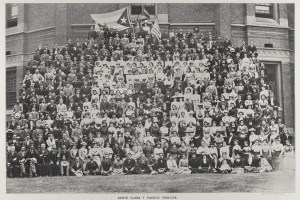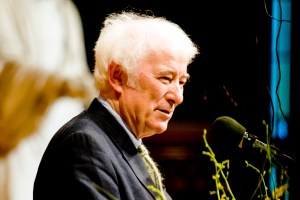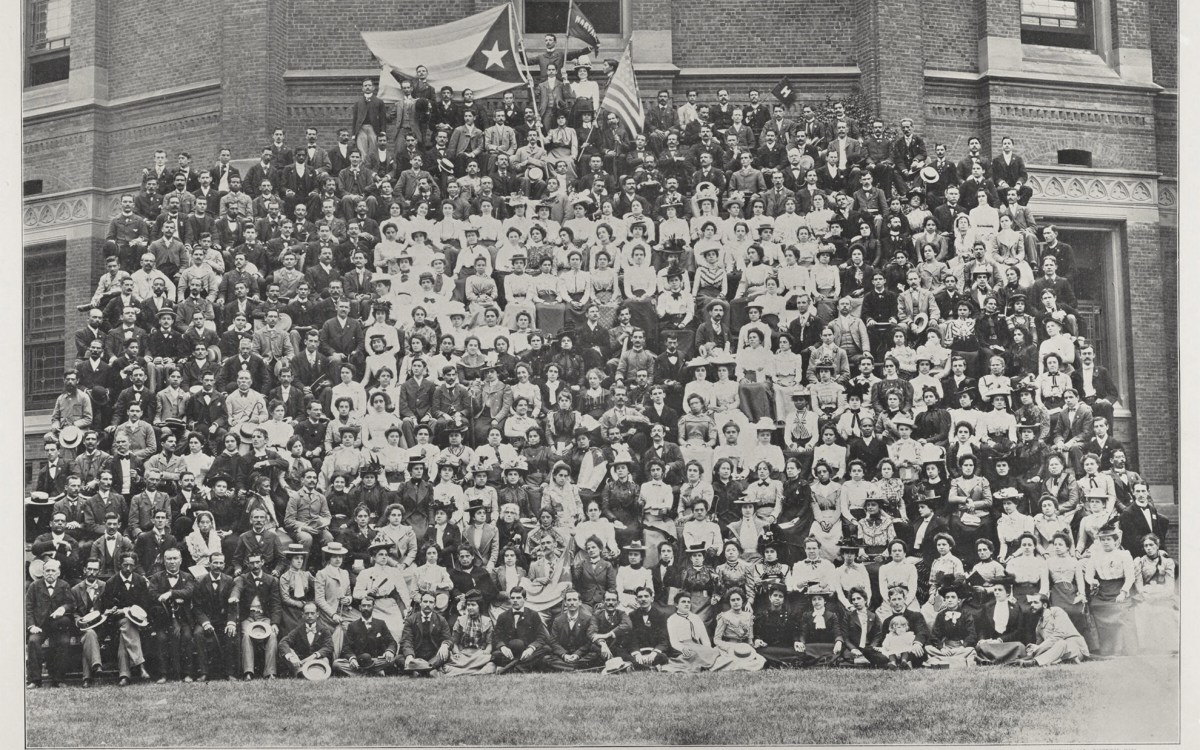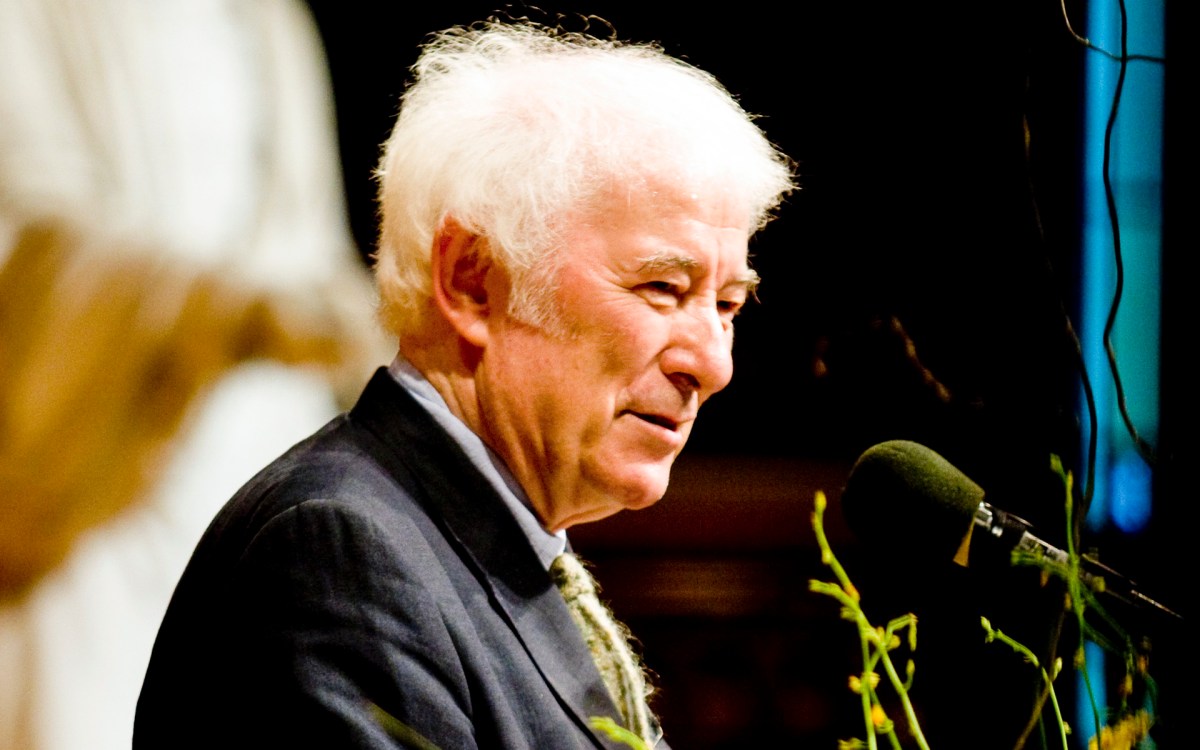That old ‘Gatsby’ magic, made new
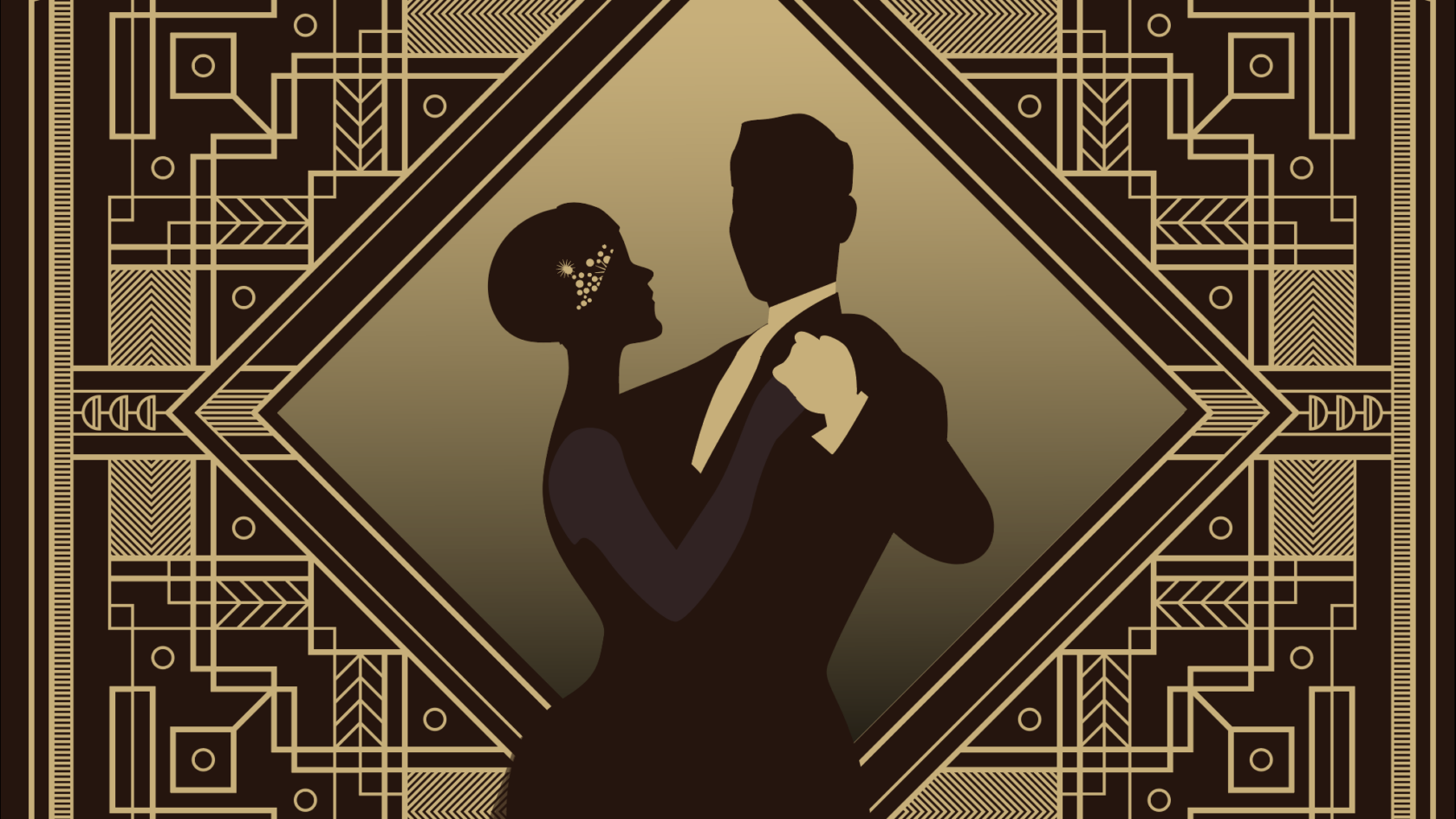
Illustration by Liz Zonarich/Harvard Staff
Fitzgerald’s masterpiece, now the inspiration for a new A.R.T. musical, never reads the same
Why rewrite a perfect novel? The prose of F. Scott Fitzgerald’s “The Great Gatsby,” published in 1925, is one of the most memorable things about it:
“The only completely stationary object in the room was an enormous couch on which two young women were buoyed up as though upon an anchored balloon. They were both in white, and their dresses were rippling and fluttering as if they had just been blown back in after a short flight around the house.”
This is when we first meet Gatsby’s lost love, Daisy. Her perpetual breathlessness, her ability to evoke the expensive frivolity of balloon rides, the illusory innocence of the white dress: It’s all there, not a word wasted. But the scene is also a great example of Fitzgerald’s genius for conjuring a tableau one can step into. It goes on: “I must have stood for a few moments listening to the whip and snap of the curtains and the groan of a picture on the wall. Then there was a boom as Tom Buchanan shut the rear windows and the caught wind died out about the room, and the curtains and the rugs and the two young women ballooned slowly to the floor.” As an artist who works with visuals and sound, how could you not itch to reimagine that on film or on stage?
In the adaptation of this scene in Baz Luhrmann’s 2013 movie, Toby Maguire’s wide-eyed Nick pushes his way through fluttering white curtains like a child in a castle of bedsheets. Weighed down by its length and sentimentality, Luhrmann’s adaptation nonetheless contains flashes of genius. The casting of an aging Leonardo DiCaprio as Gatsby, with the magic he held for the girls of my generation evaporating from his still-slim shoulders; the updating of the 1920s soundtrack from jazz to hip-hop, a subtle nod to the appropriation of Black music by the novel’s WASP elite — in snatches, it succeeds in translating something of the novel’s spirit to the big screen.
Nghi Vo’s strange, fantastical 2021 novel “The Chosen and the Beautiful,” one of a cluster of retellings since “Gatsby” entered the public domain three years ago, builds its world of 1920s magic and wealth outward from the ballooning dresses. Narrated by Daisy’s best friend, Jordan, who in this version is a Vietnamese adoptee raised among wealthy white ingenues, the metaphor of flight becomes literal:
“The wind came into the house from the Sound, and it blew Daisy and me around her East Egg mansion like puffs of dandelion seeds, like foam, like a pair of young women in white dresses who had no cares to weigh them down. […] Daisy cracked open a small charm that she purchased on a whim in Cannes a few short years ago […] there was a gust of wind of a different kind, and then we were airborne, moving with languid grace along the high ceilings of her house.”
“The Chosen and the Beautiful” inhabits “Gatsby” in a different way than Luhrmann’s more straightforward adaptation. Its Jordan is coming of age into the realization that she can never truly belong in the wealthy white world in which she was raised, while the illusory quality of wealth in Fitzgerald’s work becomes real magic in Vo’s. Jordan’s perspective allows Vo to explore the growing societal tensions in an America barreling toward the Great Depression and the Second World War, just visible through the cracks of Fitzgerald’s novel. Vo also reads Fitzgerald’s characters through queer lenses. Nick’s fascination with Gatsby has been often interpreted as queer, but here the bisexual Jordan’s unacknowledged obsession with Daisy parallels — and illuminates — Gatsby’s. Early in Vo’s novel, Jordan helps the teenage Daisy get an abortion. Daisy’s desperation, her vulnerability, the cost of her performance of wealthy, white femininity — so enchanting to Gatsby and Nick — are more visible here as the flip side of her selfish cruelty.
“The Great Gatsby” holds a strange place, to an outsider like me, in American literature. I read it first as a teenager in England. It was an oddity, a beautifully written novel about awful people from another country’s history, and I found its characters’ emotions and choices inexplicable. In the U.S., its inclusion in the high school curriculum has transformed it from a novel into a reflection on the glamour and the hollowness of the American Dream. I am fascinated by the implications of a nation’s choice to install it in its young people’s consciousness. “Gatsby” is a story about young people in a young nation, to be sure, but it is also a story about the imminent loss of that youth and the emptiness of everything afterward. “I felt,” Nick says about Daisy’s husband, “that Tom would drift on forever seeking, a little wistfully, for the dramatic turbulence of some irrecoverable football game.” Revisiting “The Great Gatsby” in adulthood is always nostalgic, as the reader encounters its characters from an ever-greater distance in a way that enhances the novel’s longing for its own past. In my late 30s, I find it almost unbearably sad.
The pragmatic reason, the boring reason, that “Gatsby” keeps being adapted is that it can bank on an audience of readers. The commercial viability of adaptations is why the media landscape has shifted so dramatically toward remakes and sequels since the 2008 financial crash. But amid a dreary, endless landscape of cynical cash grabs (Marvel universe, I’m looking at you), “Gatsby” adaptations stand out, because “Gatsby” is not just a novel — it is America’s imagining of itself.
Fidelity can be an artistic trap. Luhrmann’s film most succeeds when it conjures spectacle from visuals and soundtrack; the narrative voiceover, adapted closely from the novel, drags. Vo’s book, in contrast, updates Fitzgerald’s questions about who gets to inhabit the American Dream, and uses the fantasy genre to reflect on the nature of the fantasies at the heart of “Gatsby.” Just as rereading Fitzgerald’s masterpiece is richer and more poignant from the perspective of age, a good adaptation allows one to reread a beloved novel through the eyes of an artist, seeing what they see. Next time I open “Gatsby,” I will have seen the A.R.T. musical it inspired. I will not be the same, and the novel will not be the same, and that is its brilliance.
Anna Wilson is an assistant professor in Harvard’s English Department.
“Gatsby” runs through Aug. 3 at Loeb Drama Center.
Get the best of the Gazette delivered to your inbox
By subscribing to this newsletter you’re agreeing to our privacy policy

